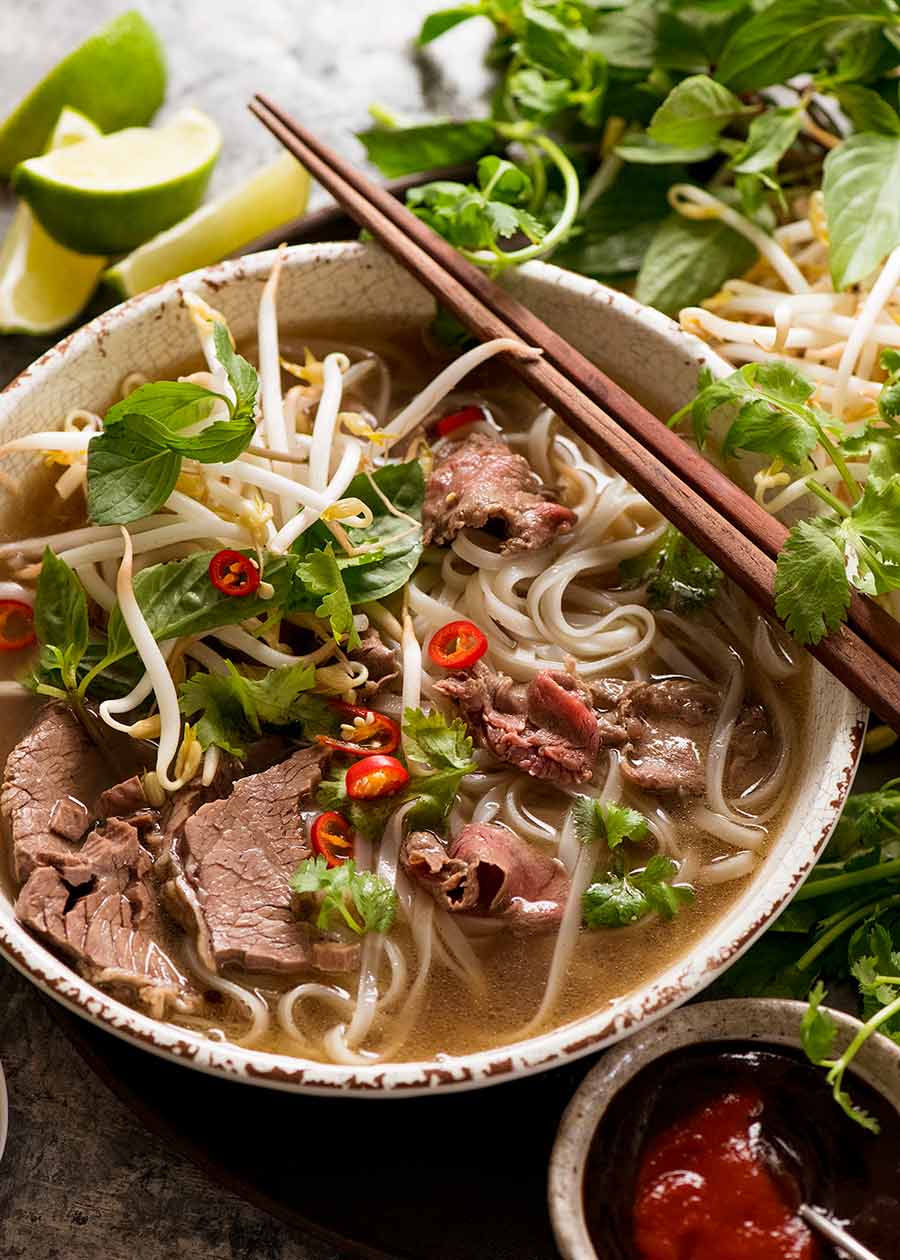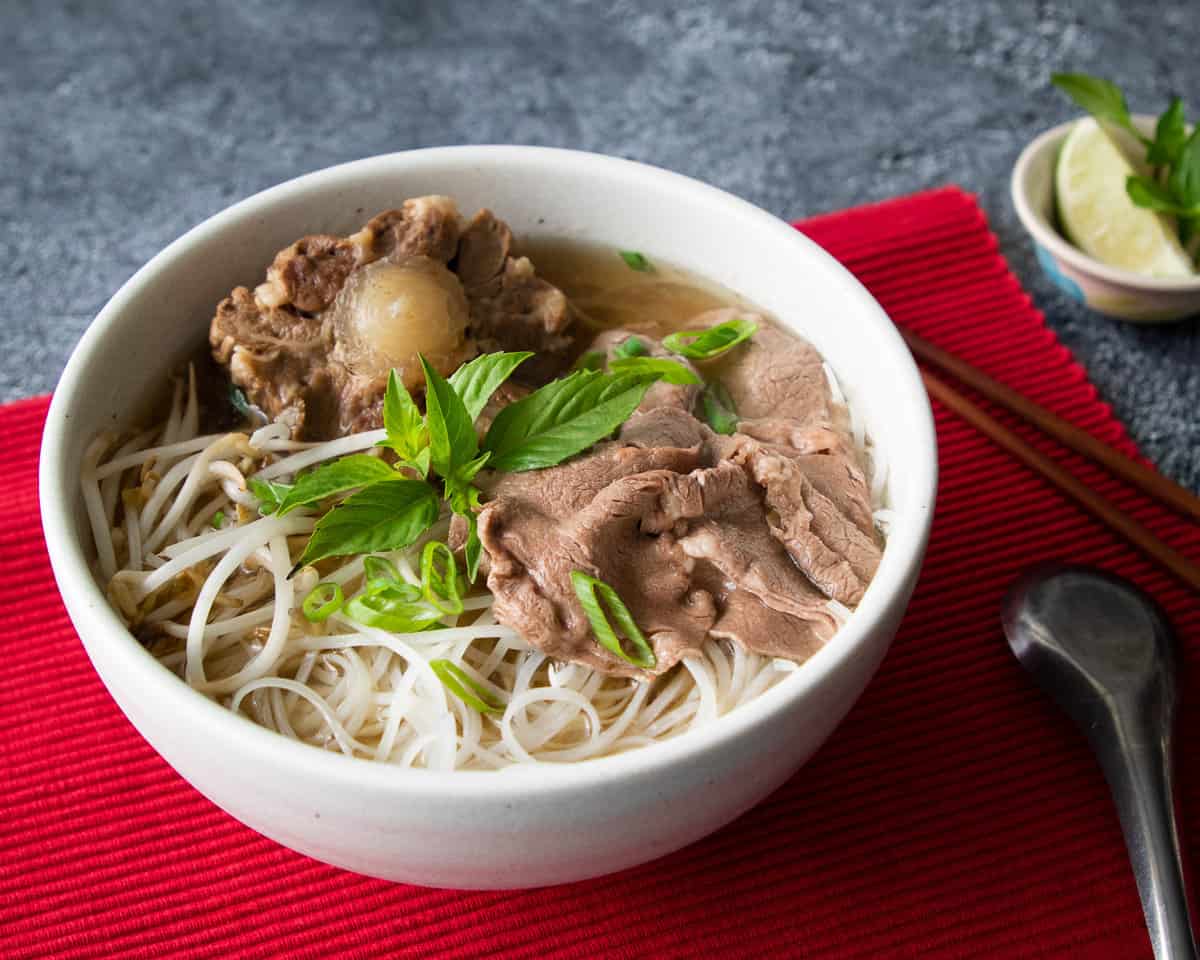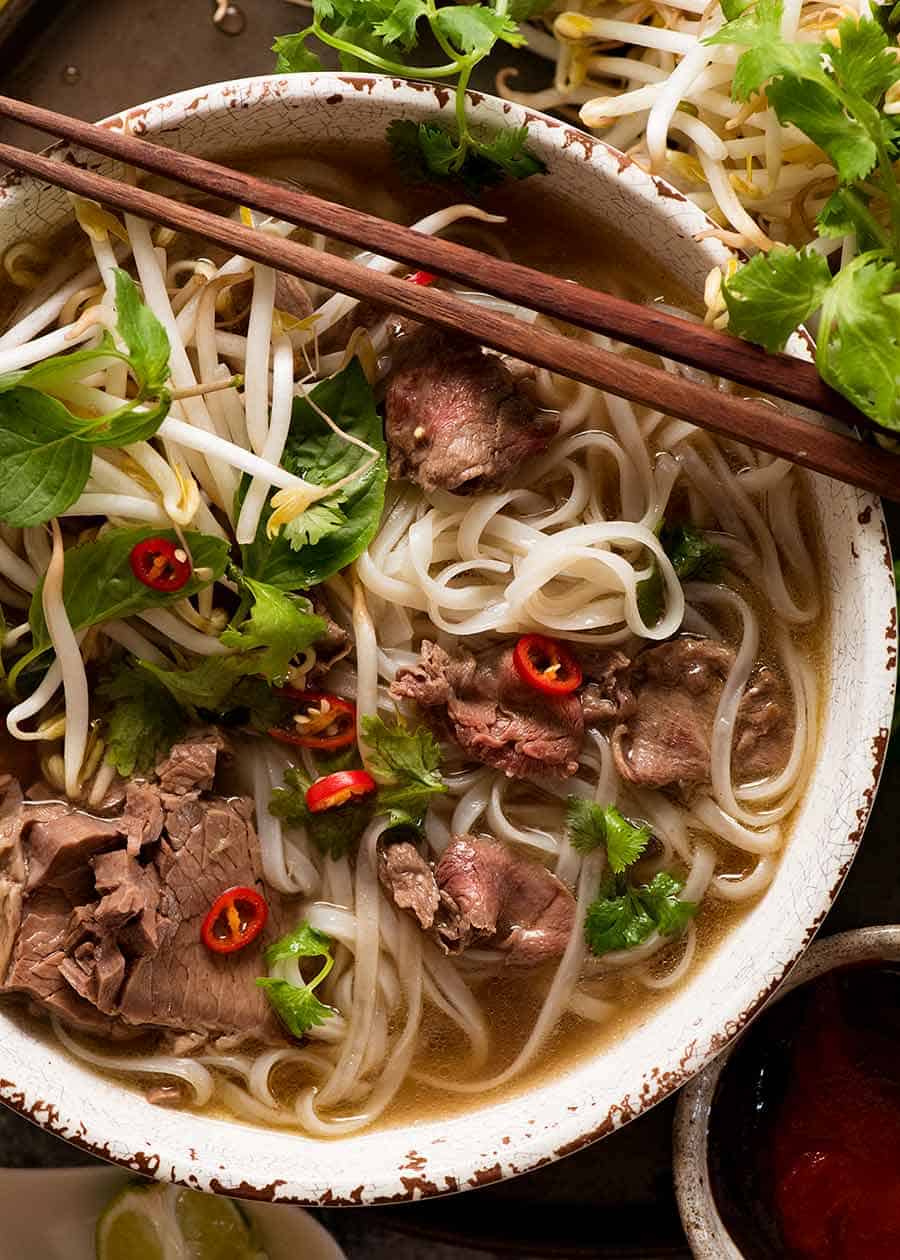There's a good chance you've heard about Pho, Vietnam's well-known noodle soup, the kind that warms you right up from the inside. It’s a dish many people around the globe have come to love, a real comfort food for so many, with its rich broth and tender noodles. This particular food holds a special spot in the hearts of folks from Vietnam, often seen as a true taste of home, a dish that brings people together around the table.
Yet, for all its fame in its home country, sometimes even the most popular foods can find things a little different when they travel. You know, like how a restaurant selling this very food opened in Jinan MixC, a shopping spot, but didn't seem to get many customers. It just couldn't keep going and had to close its doors, which is a bit of a shame, really. When you check maps now, it seems there are not many Pho places left across the whole country, which makes you wonder why something so popular back home just doesn't quite catch on elsewhere, you know?
But what if we looked at another side of Vietnamese food, something a little different from the usual soup? We are talking about "pho luc lac," a dish that brings some of the familiar tastes but in a fresh way. It’s a meal that has its own charm, perhaps offering a different kind of experience for those who might not be looking for a bowl of soup. This other food, in some respects, might just be the thing that introduces more people to the wonderful tastes of Vietnam, too it's almost a different take on what Vietnamese cooking can be.
Table of Contents
- What is Pho Luc Lac Anyway- A Quick Look
- Is Pho Luc Lac a National Dish Like Regular Pho?
- Why Did Regular Pho Struggle in China- Could Pho Luc Lac Face Similar Hurdles?
- What Goes Into a Good Pho Luc Lac- Tips from the Kitchen
- How Do You Say "Pho" Anyway- And What About "Luc Lac"?
- Beyond Pho Luc Lac- Other Surprising Vietnamese Foods
- What Makes Vietnamese Food Special- A Look at Flavors
- Thinking About Pho Luc Lac- A Different Kind of Vietnamese Noodle Dish
What is Pho Luc Lac Anyway- A Quick Look
So, you might be thinking, what exactly is "pho luc lac"? Well, it's a very popular dish from Vietnam, often called "shaking beef" because of how the meat is cooked. It usually features tender pieces of beef, often sirloin, that get quickly cooked in a hot pan, almost like a stir-fry, with a tasty sauce. This sauce typically has flavors like garlic, black pepper, and soy sauce, giving the beef a rich and savory taste. It's a meal that really hits the spot for many people, a bit different from the soup you might expect.
The "luc lac" part of the name, you see, refers to the way the beef is prepared. The cook shakes the pan back and forth vigorously while the beef cooks, making sure each piece gets a good sear and soaks up all that wonderful flavor from the sauce. This quick, high-heat cooking method helps the beef stay juicy and tender inside, with a nice outer coating. It's a fun process to watch, and it really makes a difference in the final taste and feel of the beef. That quick shaking motion is a key part of what makes "pho luc lac" special.
Unlike the traditional noodle soup, this "pho luc lac" dish is usually served with rice, or sometimes with a side of fresh greens like lettuce and tomatoes, which makes it a bit lighter. Occasionally, you might find it served with noodles, but it’s not swimming in broth like the classic Pho. It’s more of a dry dish, letting the rich beef and sauce be the main event. This makes it a great option for those who might prefer something without a lot of liquid, offering a different kind of satisfying meal that is that much more focused on the meat.
Is Pho Luc Lac a National Dish Like Regular Pho?
Regular Pho, the noodle soup, is certainly seen as a national food in Vietnam, a symbol of the country's cooking that everyone knows. It's something people eat at all times of the day, from breakfast to a late-night snack, and it has a deep place in the country's food story. Its broth, often simmered for hours, is what really makes it stand out, giving it a unique and comforting flavor that people just love. This widespread love and tradition truly make Pho a food that represents the nation, really.
While "pho luc lac" is very well-liked and widely available across Vietnam, it probably doesn't hold the same kind of "national food" status as the soup. It's more of a popular everyday meal, something people enjoy often in homes and at restaurants, but it doesn't carry the same historical weight or universal recognition as Pho soup. You'll find it on many menus, and it's a go-to for a quick and tasty meal, but it's perhaps not the first dish someone thinks of when they think of Vietnamese food as a whole, you know? It's still very much a part of the food scene, just a different kind of star.
Why Did Regular Pho Struggle in China- Could Pho Luc Lac Face Similar Hurdles?
It's interesting to think about why traditional Pho soup had a tough time in places like Jinan, where a restaurant closed down because not enough people were buying it. The text mentions this, and it makes you wonder about the tastes people have in different places. Perhaps the flavors of the broth, which are so familiar and loved in Vietnam, just didn't quite match what people in that part of China were looking for in their meals. It could be about how different food traditions meet, and sometimes they don't quite click, too it's almost like two different languages of flavor.
There are many reasons why a food that's a big hit in one place might not do so well somewhere else. It could be the particular spices, the way the dish feels in your mouth, or even how it's usually eaten. Some people might find the broth of Pho soup a little too different from what they're used to, or maybe they just prefer other kinds of noodle dishes. It's a common thing for foods to face these kinds of challenges when they travel, trying to find their place in a new food scene, really. Different eating habits can make a big difference, you see.
So, could "pho luc lac" face similar problems if it were introduced more widely? It's possible, but perhaps less likely in some ways. Since "pho luc lac" is a drier dish with cooked beef and a savory sauce, it might be more familiar to people who enjoy stir-fried dishes or meat-and-rice meals. It doesn't rely on a complex broth, which might be an easier flavor profile for new eaters to get used to. However, local tastes for beef dishes and the specific seasonings used would still play a big part in how well it's received. It's a bit of a guessing game, but it does offer a different experience, so that might help it, in a way.
What Goes Into a Good Pho Luc Lac- Tips from the Kitchen
When making "pho luc lac," choosing the right kind of noodles, if you decide to include them, is quite important, just like with the soup version. The original text suggests using "flat, thin 'Vietnamese style rice noodles'" for Pho. For "pho luc lac," if you're serving it with noodles instead of rice, these same thin, flat ones would work very well. They have a delicate texture that pairs nicely with the tender beef and the sauce, not overpowering the other tastes. The noodles should be cooked just right, not too soft, giving a pleasant feel when you eat them, you know?
And then there's the chili, which is something to be careful with, as the text points out. It says "small chili peppers have a lot of kick, it's not suggested to put too much, otherwise the soup will also become very spicy." This advice holds true for "pho luc lac" too. While you might want a bit of heat, adding too much of those tiny, powerful chilies can easily make the dish overwhelmingly hot, taking away from the other lovely tastes. A little bit can add a nice warmth, but it's easy to go overboard, so a light hand is best, really.
Beyond the noodles and the chili, the main stars of "pho luc lac" are the beef and its sauce. The beef should be good quality, cut into bite-sized pieces so it cooks evenly and quickly. The sauce is what gives the dish its signature taste, often a mix of soy sauce, oyster sauce, sugar, and black pepper. Some cooks might add a little lime juice or vinegar for a bit of brightness. Getting the right balance of these ingredients is key to a truly flavorful dish, making sure the beef is coated well and tastes just right, you see. It's a very simple yet effective combination.
How Do You Say "Pho" Anyway- And What About "Luc Lac"?
Many people wonder about the correct way to say "Pho." The text gives a good hint, saying the Vietnamese pronunciation is "similar to 'photography' first syllable, just a long vowel." So, it's more like "fuh" with a slightly longer sound on the "uh," rather than a hard "foh." Getting the sound right can be a little tricky because Vietnamese has tones, which are like the rise and fall of your voice. The text mentions "313 tone change," which means the voice goes down, then up, then down again. It's a subtle thing, but it makes a difference to native speakers, you know?
The "ph" spelling in "Pho" is interesting, and the text explains its origins. It says "most of the 'ph' spelling comes from the Greek letter Phi," which when written in our alphabet often becomes "ph." It gives "philosophia" becoming "philosophy" as an example. This means that even though "Pho" is a Vietnamese word, its spelling in our alphabet has roots in ancient Greek, which is pretty neat when you think about it. It’s a little piece of history in a simple word, really.
As for "luc lac," the second part of "pho luc lac," it simply means "shaking" or "to shake." This perfectly describes the cooking method for the beef, where the pan is shaken to cook the meat quickly and evenly. So, when you put it all together, "pho luc lac" essentially means "shaking beef," which is a pretty clear and direct name for the dish. It tells you a lot about how it's made just from its name, which is that much more descriptive, really. It’s a very fitting name for a dish that gets its character from that specific action.
Beyond Pho Luc Lac- Other Surprising Vietnamese Foods
The original text includes a little call-out, an "unrewarded collection activity," asking if anyone has "been to Vietnam" and mentioning that "besides Vietnamese rice noodles, Vietnam also has many surprising foods." This is very true! While Pho, and by extension "pho luc lac," are well-loved, the country's food scene is incredibly rich and varied. There's so much more to discover beyond the famous soup bowls, a whole world of tastes waiting to be explored. It’s a good reminder that a country's cooking is rarely just about one famous dish, you know?
For example, there's Banh Mi, a kind of sandwich that's just bursting with flavor. It usually comes on a crispy baguette filled with different meats, pickled vegetables, fresh herbs, and a savory sauce. It's a quick, tasty meal that's very popular for lunch or a snack. Then there are fresh spring rolls, often called Goi Cuon, which are light and refreshing, filled with shrimp, pork, rice vermicelli, and herbs, all wrapped in thin rice paper. They're usually served with a peanut dipping sauce, and they're just delicious, really. These are just a couple of examples of the many other delightful things you can find.
What Makes Vietnamese Food Special- A Look at Flavors
What makes Vietnamese cooking stand out, whether it's "pho luc lac" or anything else, is often the balance of tastes. You'll find a mix of sweet, sour, salty, and spicy all working together in harmony. This isn't just about adding different things, but about making sure no single taste overpowers the others. It's a delicate dance of flavors that makes each bite interesting and satisfying, leaving you wanting more. This thoughtful approach to seasoning is a big part of why the food is so appealing, too it's almost like a symphony for your taste buds.
Another thing that makes Vietnamese food so good is the focus on fresh ingredients. Lots of fresh herbs like mint, basil, and cilantro are used, along with crisp vegetables. These fresh elements add brightness and texture to dishes, making them feel light and vibrant. It's not just about cooking things, but also about putting together fresh components that really pop. This emphasis on freshness is a hallmark of the cuisine, and it truly shines through in dishes like "pho luc lac" where the quality of the ingredients can really be tasted, you see.
And it's worth noting that Vietnamese food isn't just one single style; there are regional differences too. The north, center, and south of Vietnam each have their own distinct cooking traditions and preferred flavors. Some regions might lean more towards spicy, others towards sweet, and some might use particular ingredients that are common in their area. This means that even a dish like Pho, or "pho luc lac," might taste a little different depending on where you try it, offering a range of experiences within the same country's cooking, really. It’s a very diverse food landscape.
Thinking About Pho Luc Lac- A Different Kind of Vietnamese Noodle Dish
So, when you think about Vietnamese food, while Pho soup often comes to mind first, "pho luc lac" offers a wonderfully different experience. It brings together the tender beef, a savory sauce, and often fresh greens or rice, creating a meal that's both comforting and exciting. It shows how versatile Vietnamese cooking can be, moving beyond just soups to offer a wide array of flavors and textures. It’s a good reminder that there’s always more to explore in the world of food, you know?
This particular dish might appeal to those who enjoy meat-focused meals or who are looking for something with a bold, rich flavor without the broth. It's a dish that stands on its own, showcasing the skill of Vietnamese cooks in preparing simple ingredients to create something truly memorable. Whether you're familiar with Vietnamese food or just starting to try it, "pho luc lac" is a dish that's worth seeking out, offering a satisfying and delicious taste of Vietnam that is that much more unique.



